How to Install and Troubleshoot Current Transformers (CTs) With The Sanctuary System
Please note: The system warranty is voided if any changes to the system are not done by a licensed electrician or one of our certified technicians. If in need of certification, go to certification.lionenergy.com
Useful Files/Links
Overview
The current transformers (CTs) measure the current on the grid lines that feed the home. Please pay special attention to the installation of the CTs. CT installation errors are the most common problem during installation. An incorrect CT installation will negatively affect the operation of the inverters.
There are several ways to set up CTs with the 12 kW hybrid system. Note that CTs are directional and have a small engraved arrow on them to show direction. CTs 1 and 2 should be placed on grid input lines 1 and 2, respectively.
When using the non-recommended alternate reporting CT placement where other main panel loads such as an air conditioning compressor are not included in the measurements, installers should notify the system owner that the data collected from their system will most likely have large discrepancies from their electrical company's meter.
Recommended CT Installation Location
It is recommended that the CTs be placed on the lines between the power meter and the main panel.
The inverter can send power towards the grid to cover main panel loads that are not on the inverter's essential loads panel. When the setting "CT Limit Current" is set to zero, the inverter can send enough power to cover the loads, but not sell power to the grid until the battery is full and there is excess solar beyond what the loads are demanding.
Common Grid CT
Common Grid CT means that parallel inverters share the data from the parent inverter’s CTs. For parallel inverter systems using the common grid CT configuration, the CTs must be placed above the connection point where all parallel inverters get power from the grid.
Data reporting note: When “Common Grid Connection” is enabled, the measured grid current for each CT is divided among the parallel inverters.
CT Plug Location on the Inverter
The CT for line 1 is on the bottom right, and line 2 is in the bottom center as shown in this diagram:
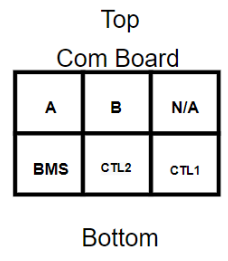
In this diagram of the COM board, "top" can mean "away from," and "bottom" can mean "towards the inverter" if the pins face down instead of away from the inverter.
Page 22 of installation guide
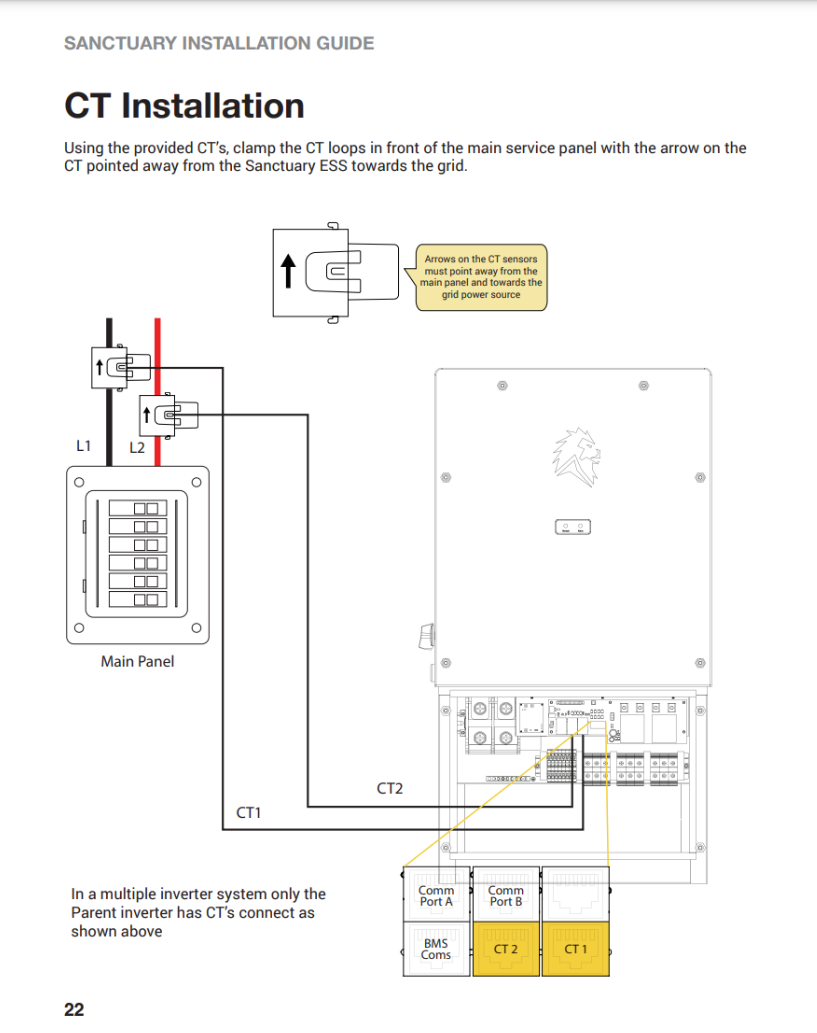
For Multiple Grid Feed Reporting
This is typically done for systems where the homeowner would like to see data from both the home and the Sanctuary, but the installer does not have access to a location where the grid lines for both the home and the system combine.
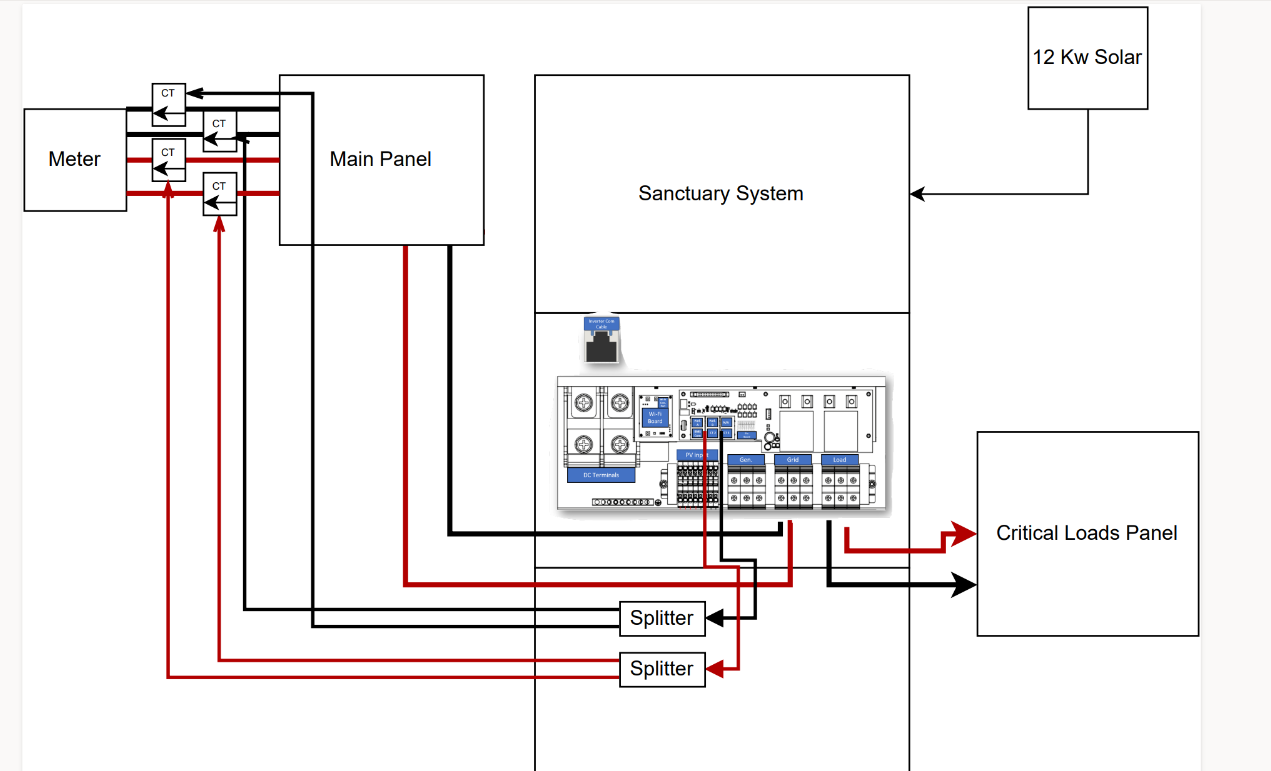
Alternate Configurations
For parallel systems with the setting "Common Grid CT" disabled, each inverter needs the CTs installed at the grid connection point below each inverter. If there are no loads above the grid connections to the inverters, this configuration performs the same as using the Common Grid CT configuration.
Data reporting note: When “Common Grid Connection” is disabled, each inverter relies on its own CT measurements for grid current. If one inverter does not have CTs plugged in, it assumes that the grid current is zero and will sell power (usually 8 kW) back to the grid until the battery reaches the time-of-use target SOC.
(Alternate Configuration) Parallel Inverter System
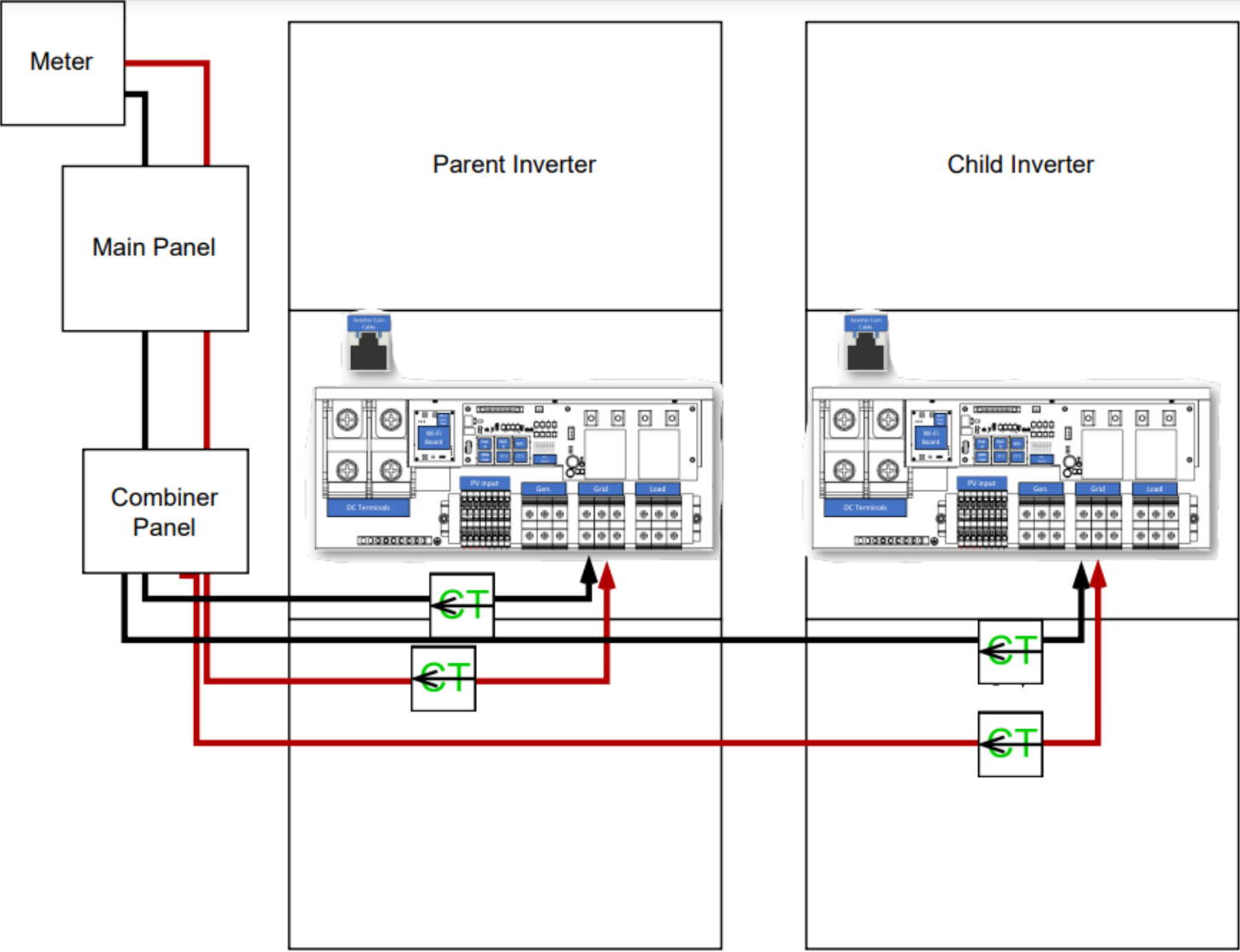
If using this connection method on a parallel inverter system, then the installer must go into the advanced settings after commissioning and ensure that the setting “Common Grid Connection” is off as seen here:

(Alternate Reporting) Single Inverter
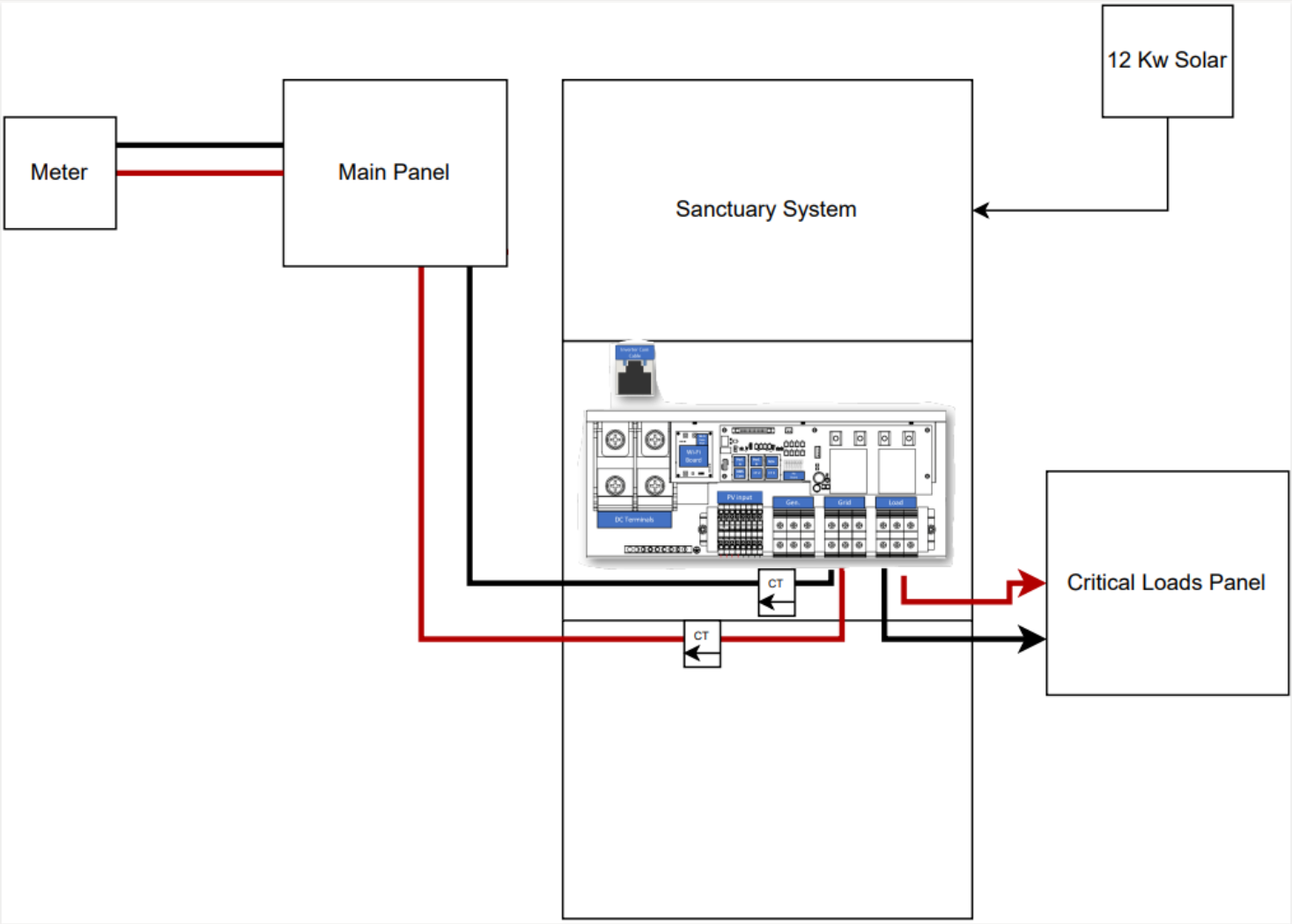
Common Questions (Troubleshooting)
Q: Why is my system selling back my battery to the grid when I don’t want it to?
A: CTs are on the wrong lines (L1 vs L2) of the system
A: Battery sell mode was accidentally enabled. Go into settings and switch to normal or emergency mode to fix
Q: Why is my consumption almost mirroring my solar production once my batteries are charged?
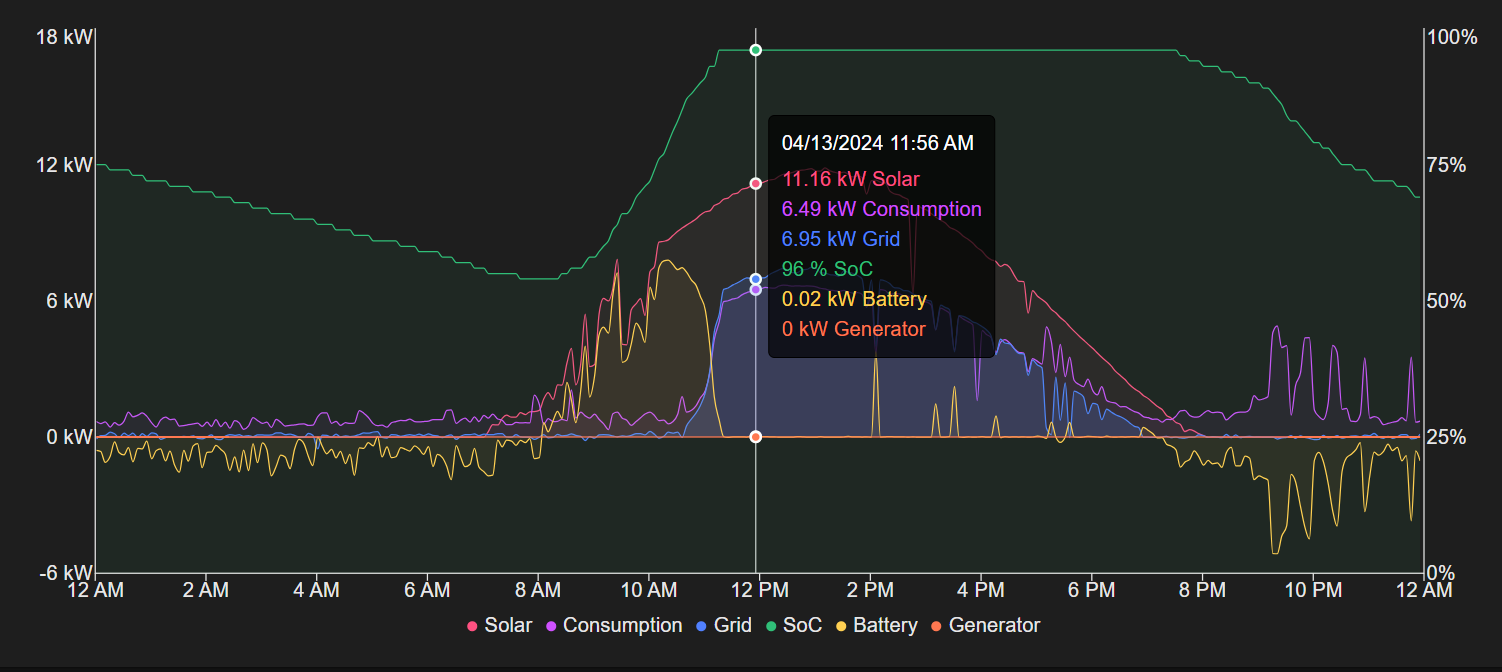
A: CTs are facing the wrong direction. Flip the direction of the arrows.
or
A: The system has multiple sets of CTs installed, but has a common grid enabled.
or if consumption is always mirroring
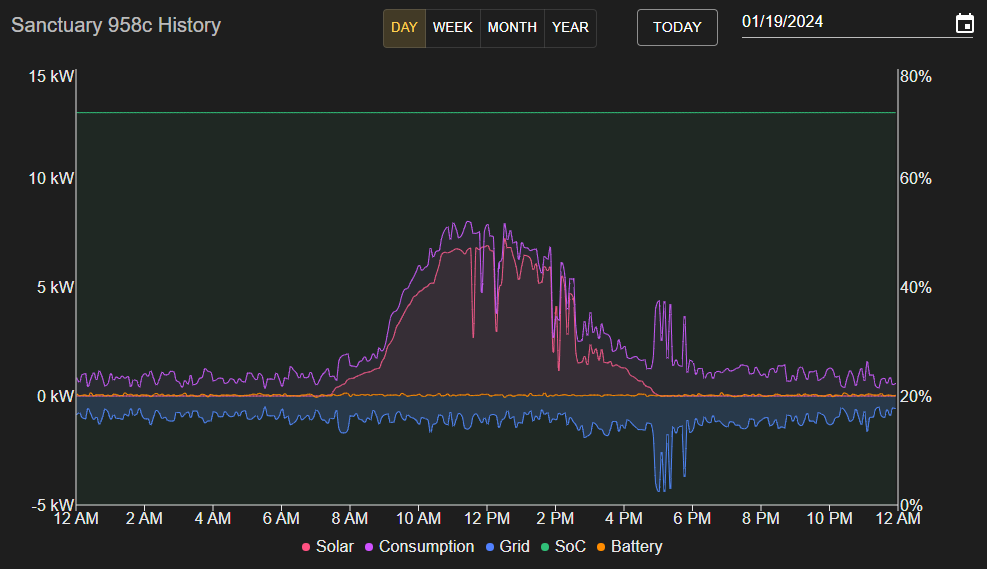
A: The CT’s were placed on the load side instead of the grid
Q: Why does my consumption disappear once my batteries reach their SoC reserve?
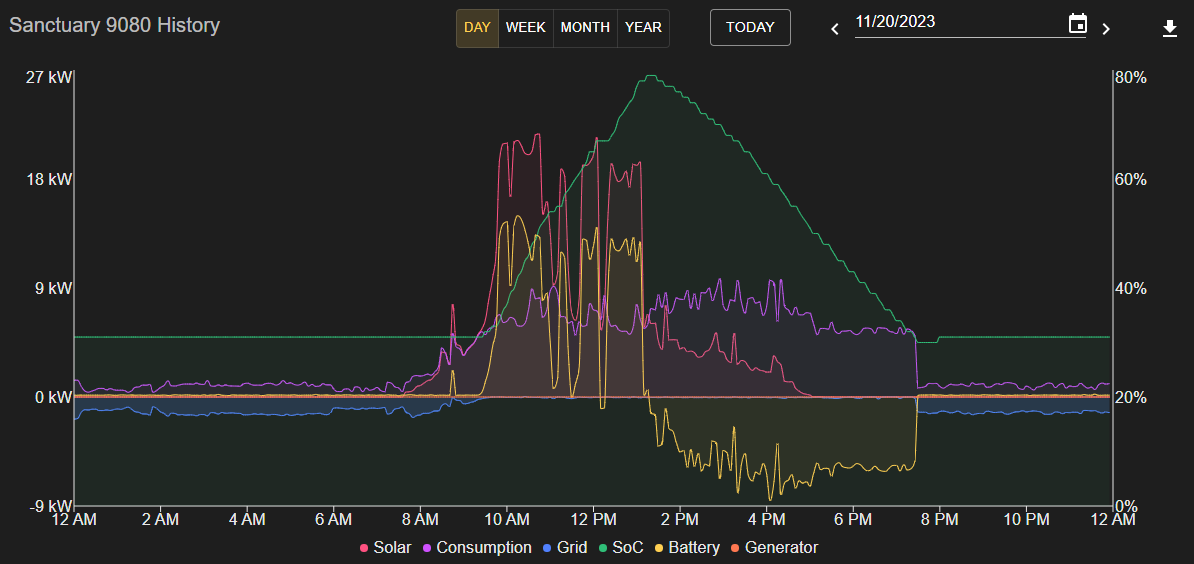
A: The CT’s are on the wrong lines (L1-L2) either swap line placement or swap RJ-485 ports at the inverter.
All Known Possible CT Misplacements
-
Common grid CT enabled when CTs are placed below each inverter.
-
Common grid CT not enabled when CTs are placed above the main panel.
-
Both CTs are on the same line above the main panel.
-
Both CTs on the same line above the main panel, both backwards
-
Both CTs on the same line above the main panel, opposite directions from each other.
-
One CT on the N line, the other on L1, both correct orientation
-
One CT on the N line, the other on L1, both incorrect orientation
-
One CT reversed direction
-
Both CTs reversed direction
-
One CT unplugged
-
Both CTs unplugged
-
CTs on the load lines
-
CTs backwards on the load lines
-
CTs on the same load line both with arrows toward the inverter
-
CTs on the same load line, both with arrows away from the inverter
-
Both CTs on the same load line, opposite directions
-
Master CTs are on common grid. Slave CTs are below the inverter. Common grid CT off.
-
CT L1-L2 swapped
-
CT L1-L2 swapped, L1 also backwards
-
Only L1 CT plugged in, but actually is on L2